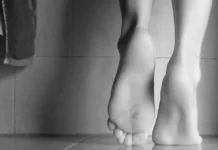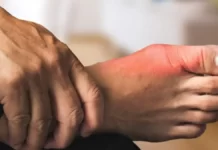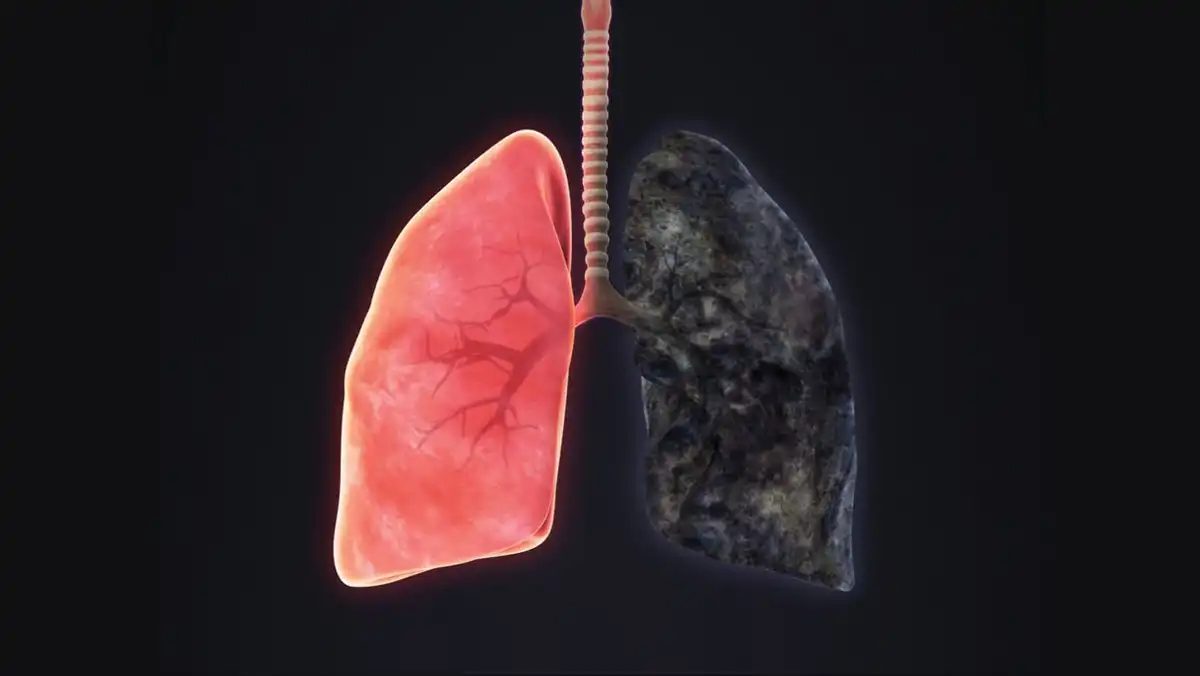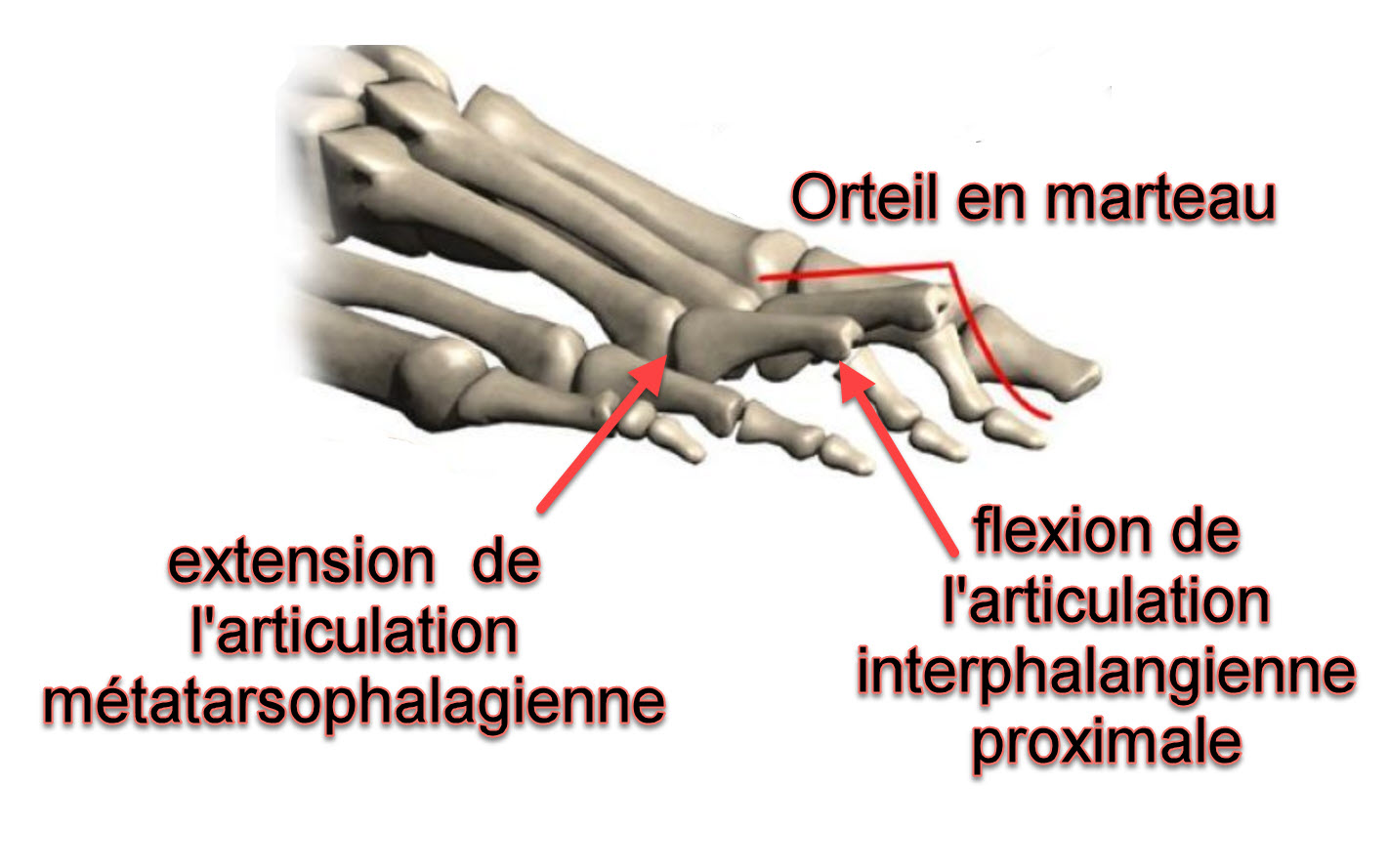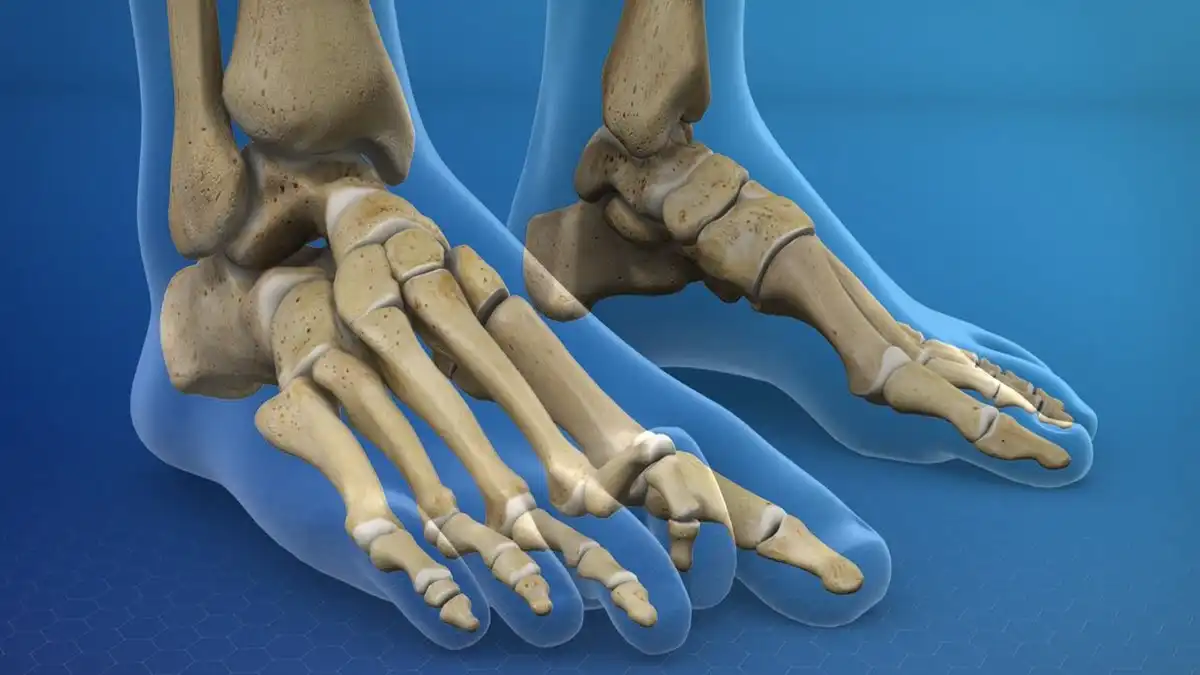Did you know that our feet, often neglected, can sometimes rebel by expressing a very specific pain called metatarsalgia? Explore with us the fascinating and sometimes complex world of the metatarsals, and discover how to take care of these faithful companions who carry us every day.
Introduction to Metatarsalgia
Metatarsalgia is a painful condition that affects the metatarsals, the long bones located in the front of the foot, just before the toes. It is usually caused by overload, excessive pressure or biomechanical imbalances in this region. Athletes, people who do high-impact activities on the feet, and those who wear unsuitable shoes are particularly prone to this condition.
Symptoms of metatarsalgia include shooting or burning pain in the metatarsal area, which may worsen with walking, running, or standing for prolonged periods. The pain can be localized under a single metatarsal or affect several of them. It may also be accompanied by a burning sensation, tingling or numbness.
Diagnosing metatarsalgia usually involves a physical examination by a healthcare professional, which may include mobility tests, palpations, and gait assessments. X-rays may sometimes be necessary to rule out other conditions such as fractures or bone pathologies.
Treatment of metatarsalgia aims to relieve pain, reduce inflammation and correct biomechanical imbalances. This may include rest, ice application, foot elevation, muscle strengthening and stretching exercises, and physical activity modifications. Wearing appropriate shoes with good cushioning and support can also help relieve symptoms.
In more severe or persistent cases, other treatment options may be considered, such as custom foot orthotics, physiotherapy, corticosteroid infiltrations or, in some extreme cases, surgery to correct anatomical abnormalities.

Understanding Foot Anatomy and Function
The human foot is a complex structure designed to support weight, enable movement, and absorb impact. With its intricate system of bones, ligaments, tendons, and muscles, the foot plays a crucial role in overall mobility and balance. Understanding foot anatomy and function is essential for appreciating its importance in daily activities, exercise, and long-term health.
Structure of the Foot: Bones, Ligaments, and Tendons
The foot is composed of 26 bones, over 100 ligaments, and numerous tendons, working together to provide flexibility and stability. The bones of the foot are divided into three regions: the hindfoot, midfoot, and forefoot.
- Hindfoot: This area consists of the talus and calcaneus bones. The talus connects the foot to the ankle joint, allowing for up-and-down movement, while the calcaneus forms the heel bone and is the largest bone in the foot, absorbing much of the impact during walking or running.
- Midfoot: The midfoot is made up of the navicular, cuboid, and three cuneiform bones. These bones form the arch of the foot and provide structural support for weight distribution. The ligaments in this region, particularly the plantar fascia, help maintain the foot’s arch integrity.
- Forefoot: The forefoot contains the metatarsal bones and the phalanges, or toe bones. The metatarsals form the ball of the foot, which plays a significant role in pushing the body forward during walking or running. The toes assist with balance and adapting to uneven surfaces.
Ligaments in the foot connect the bones, providing stability and limiting excess movement. Tendons attach muscles to bones, allowing for the foot’s wide range of motion. Two key tendons are the Achilles tendon, which connects the calf muscles to the heel bone, and the tibialis posterior tendon, which supports the arch.
How Weight Distribution Affects the Foot
The foot is responsible for supporting the entire weight of the body, and proper weight distribution is critical for foot health. During standing, walking, or running, weight shifts dynamically across different parts of the foot, with the heel and the ball bearing most of the load.
- Heel: The calcaneus or heel bone absorbs significant impact, especially when the foot strikes the ground during movement. This impact is then distributed through the arch to other parts of the foot.
- Arch: The foot’s arch acts like a spring, helping to distribute weight evenly across the foot. Proper alignment of the arch is crucial for shock absorption and preventing injury. Overpronation (when the foot rolls inward too much) or supination (when the foot rolls outward excessively) can lead to uneven weight distribution, causing stress on the foot’s ligaments and tendons.
- Ball of the foot: This area, comprising the metatarsal heads, bears considerable weight when the heel lifts off the ground during walking or running. Any imbalance here can lead to conditions like metatarsalgia (pain in the ball of the foot) or stress fractures.
Improper weight distribution can result in foot pain, fatigue, and conditions such as plantar fasciitis or Achilles tendonitis. Ensuring that the foot can manage these loads effectively is vital for preventing injuries and maintaining long-term health.
The Role of Footwear in Foot Health
Footwear plays a crucial role in foot health by influencing how weight is distributed and absorbed by the foot. Proper shoes offer support, cushioning, and stability, while improper footwear can lead to pain and injury.
- Support and Cushioning: Shoes with good arch support and cushioned soles help absorb shock and distribute pressure evenly across the foot. This is especially important for individuals with flat feet or high arches, as they are more prone to imbalanced weight distribution.
- Stability: Well-constructed shoes prevent excessive foot movement, reducing the risk of ankle sprains, overpronation, or supination. Shoes designed for specific activities, like running or hiking, are engineered to handle the unique stresses of those motions.
- Fit and Comfort: Ill-fitting shoes can lead to various foot problems, including blisters, calluses, and bunions. Wearing shoes that are too tight or too loose can also cause abnormal gait patterns, resulting in long-term foot and joint issues.
Specialized footwear, such as orthotics, can correct biomechanical issues and relieve pressure on vulnerable areas of the foot. Choosing appropriate footwear for specific activities and foot types is essential for maintaining optimal foot health and preventing injury.
Logical Pathway to Metatarsalgia Diagnosis
Metatarsalgia is a condition characterized by pain in the ball of the foot, often caused by excessive pressure on the metatarsal bones. Understanding the pathway to a diagnosis requires an exploration of the condition’s onset, progression, and the tools clinicians use for proper diagnosis. This systematic approach helps in identifying underlying causes and formulating appropriate treatment strategies.
Understanding the Onset: Early Signs and Biomechanical Factors
The first signs of metatarsalgia are often subtle but gradually become more noticeable as the condition progresses. Patients may initially report a burning sensation, tenderness, or discomfort in the ball of the foot, especially during activities that involve prolonged standing, walking, or running. These symptoms are often worse when barefoot or wearing shoes with minimal support.
Several biomechanical factors can trigger the onset of metatarsalgia:
- Foot Structure: Individuals with high arches (cavus foot) or flat feet are more prone to uneven weight distribution across the metatarsal heads, leading to excess pressure and irritation in the ball of the foot.
- Overpronation or Supination: Abnormal foot motion, such as excessive inward (overpronation) or outward rolling (supination) of the foot during walking or running, can create imbalances in weight distribution and exacerbate stress on the metatarsal bones.
- Footwear: Wearing shoes with inadequate cushioning or support, such as high heels or shoes with thin soles, can increase pressure on the ball of the foot, making metatarsalgia more likely to develop.
Recognizing these early signs and contributing factors is critical in preventing the condition from progressing into more severe, chronic pain.
Progression from Foot Stress to Chronic Pain
If the initial symptoms are not addressed, metatarsalgia can progress from mild discomfort to persistent, chronic pain. Over time, the repeated stress on the metatarsal heads leads to inflammation of the surrounding tissues, making it increasingly painful to engage in weight-bearing activities.
- Pain during Movement: As the condition progresses, patients may experience sharp or shooting pain in the ball of the foot, particularly when they push off during walking or running. The pain may radiate into the toes or be accompanied by numbness, tingling, or swelling in the forefoot.
- Worsening with Activity: Physical activities that place additional strain on the forefoot, such as running, jumping, or wearing poorly fitted shoes, will often exacerbate the pain. Left untreated, the chronic irritation can lead to the development of secondary conditions, such as bursitis or stress fractures, further complicating the clinical picture.
Clinical Observations and Patient History for Diagnosis
A thorough patient history and clinical observation are the first steps in diagnosing metatarsalgia. Patients often report pain localized to the ball of the foot, which worsens with activity and improves with rest. The onset of symptoms can be associated with changes in physical activity, weight gain, or wearing inappropriate footwear.
Key aspects of patient history include:
- Duration and Intensity of Symptoms: Clinicians will assess how long the patient has been experiencing foot pain, whether it is constant or intermittent, and what activities or conditions trigger or alleviate the pain.
- Previous Injuries or Conditions: A history of foot injuries, fractures, or preexisting conditions such as arthritis or diabetes may contribute to the development of metatarsalgia and inform the diagnostic process.
- Activity Levels and Footwear: The patient’s level of physical activity, including sports participation, and their choice of footwear can provide valuable insights into the possible causes of metatarsal stress.
Steps for Accurate Diagnosis: Physical Exams, Gait Analysis, and Imaging
Once a comprehensive patient history is obtained, physical examination and diagnostic tools help confirm the diagnosis. A systematic approach typically includes:
- Physical Examination: The clinician will palpate the foot to identify areas of tenderness and assess the structure of the foot. They may check for signs of swelling, calluses, or deformities such as hammertoes or bunions, which can contribute to metatarsalgia.
- Gait Analysis: Gait analysis is crucial for identifying abnormal foot mechanics, such as overpronation or supination. This test helps assess how the patient distributes weight across the foot during walking or running, which can reveal biomechanical factors contributing to metatarsal pain.
- Imaging: In cases where the diagnosis remains unclear, imaging tests such as X-rays, MRIs, or ultrasounds may be ordered. X-rays can reveal fractures or joint abnormalities, while MRI or ultrasound can detect soft tissue inflammation, stress fractures, or other underlying causes of foot pain.
Primary Causes and Risk Factors of Metatarsalgia
Metatarsalgia can have several causes, and often a combination of factors contribute to the development of this painful condition. One of the main causes is overload or excessive pressure on the metatarsals, which can result from various activities such as running, jumping, prolonged walking or wearing unsuitable shoes. This overload can lead to irritation of the soft tissues surrounding the metatarsals, causing pain.
Biomechanical imbalances of the foot and ankle may also play a role in the development of metatarsalgia. For example, improper distribution of body weight across the feet, excessive pronation (inward rolling) or abnormal supination (outward rolling) of the foot can place additional pressure on the metatarsals, increasing the risk of develop pain in this area.
Anatomical abnormalities of the foot, such as flat feet, pes cavus, hammertoes, or hallux valgus (bunions), can also contribute to metatarsalgia by altering foot mechanics and creating abnormal pressure points on the feet. metatarsals.
Additionally, traumatic injuries such as stress fractures, ligament sprains, or bruises can damage metatarsal structures and lead to persistent pain.
Wearing unsuitable shoes is a major risk factor for metatarsalgia. Shoes that are too tight, too narrow, high heels or pointed toes can compress the metatarsals and cause discomfort. Likewise, using athletic shoes that are worn or do not provide adequate support can increase stress on the metatarsals during physical activity.
Finally, sudden changes in the intensity or type of physical activity, such as suddenly increasing training volume or switching to hard or uneven surfaces, can overload the metatarsals and trigger metatarsalgia symptoms.
It is important to note that these causes are not exclusive and can often overlap. For example, a person with excessive pronation combined with unsuitable shoes and a sudden increase in physical activity may be more likely to develop metatarsalgia.
Metatarsalgia can be caused by a variety of factors, and often it results from a combination of several of them. Here are some of the common causes of metatarsalgia:
- Overuse or overexertion : Intense physical activity, prolonged walking, or playing certain sports can cause excessive pressure on the metatarsals.
- Inappropriate shoes : Ill-fitting, too tight, high-heeled or flat shoes can contribute to metatarsalgia. Inadequate support or excessive pressure on the front of the foot can cause pain.
- Posture or gait problems : Gait abnormalities, poor posture, or muscular imbalances can lead to uneven weight distribution on the feet, increasing the risk of metatarsalgia.
- Low or high arches : People with flat feet (low arches) or pes cavus (high arches) may be more likely to develop metatarsalgia problems.
- Arthritis or joint inflammation : Inflammatory conditions such as arthritis can affect the metatarsal joints and cause pain.
- Injuries or trauma : Fractures, sprains, or any other type of direct trauma to the metatarsals can lead to metatarsalgia.
- Excess weight : Excessive body weight can increase pressure on the feet, contributing to metatarsalgia.
- Pinched nerve : Compression or pinching of the nerve between the toes (Morton’s neuroma) can cause metatarsal pain.
- Systemic Diseases : Certain medical conditions such as diabetes, circulatory disorders or neurological diseases can affect foot health and contribute to metatarsalgia.
Symptoms of Metatarsalgia
The symptoms of metatarsalgia are generally characterized by pain localized in the front part of the foot, more specifically in the metatarsal region. This pain can vary in intensity and character, ranging from a burning or tingling sensation to a throbbing or dull ache. People with metatarsalgia may experience discomfort when walking, running, or standing for long periods of time. The pain can be exacerbated by certain activities or by wearing inappropriate shoes.
The location of the pain often depends on the affected metatarsal. For example, if the second metatarsal is affected, pain may be felt under the second and third phalanges. Likewise, if the third metatarsal is involved, the pain may radiate towards the base of the third toe.
Besides pain, people with metatarsalgia may experience other symptoms such as burning, tingling, or numbness in the metatarsal area. These sensations may be constant or occur intermittently. They can also be exacerbated by certain activities or positions, such as standing on tiptoes or walking barefoot on hard surfaces.
In some cases, metatarsalgia may cause changes in gait or posture to relieve pain. This may include reducing pressure on the affected area by changing the way weight is distributed across the feet. However, these temporary adjustments can lead to other problems, such as muscle tension or postural imbalances, if not corrected.
It is important to note that the symptoms of metatarsalgia can vary from person to person in terms of intensity and duration. Some people may experience mild, intermittent pain, while others may experience more severe, persistent pain that affects their ability to carry out normal daily activities.
- Pain: Pain is the main symptom of metatarsalgia. It is often described as a burning, tingling, pressure or shooting pain in the front of the foot, near the toes.
- Burning or numbing sensation: Some individuals may feel a burning or numbing sensation in the affected area.
- Worsens with activity: Pain may intensify during or after activities that put strain on the feet, such as walking, running, or prolonged standing.
- Relief at rest: Pain may decrease or partially disappear at rest, but it may return as soon as activity is resumed.
- Tenderness to touch: The area around the metatarsals may be tender to touch, and direct pressure on the painful area can make symptoms worse.
- Swelling: In some cases, there may be slight swelling around the painful area.
- Difficulty wearing shoes: Due to pain, it may be uncomfortable to wear shoes, especially those that put pressure on the front of the foot.
- Gait modification: To avoid pain, some individuals involuntarily modify their gait, which can lead to postural and muscular problems.
Pathophysiology of Metatarsalgia
The pathophysiology of metatarsalgia involves several complex mechanisms that can vary from person to person depending on the underlying cause of the pain. However, several physiological and anatomical processes may be involved in the development of this painful condition.
First, metatarsalgia can result from overload or excessive pressure on the metatarsals, which are the long bones located in the front of the foot. This overload can be due to various factors such as high impact activities, biomechanical imbalance of the foot or wearing unsuitable shoes. This excessive pressure can cause irritation to surrounding soft tissues, such as muscles, tendons and ligaments, resulting in localized pain in the metatarsal region.
Additionally, biomechanical imbalances of the foot and ankle may play an important role in the pathophysiology of metatarsalgia. For example, excessive pronation (inward rolling) or abnormal supination (outward rolling) of the foot can alter the distribution of body weight over the metatarsals, thereby increasing pressure on these bones and contributing to the appearance pain.
Anatomical abnormalities of the foot, such as flat feet, pes cavus, hammertoes, or hallux valgus (bunions), can also affect foot mechanics and create abnormal pressure points on the metatarsals. These abnormalities can lead to increased stress on surrounding tissues, which can cause inflammation and pain in the metatarsal area.
Additionally, traumatic injuries such as stress fractures, ligament sprains, or bruises can damage the structures of the metatarsals, leading to persistent pain and tenderness in this area.
Physiologically, metatarsalgia may be associated with inflammation of the surrounding soft tissues, including muscles, tendons and ligaments. This inflammation can be triggered by overuse, overload, or repetitive strain injury, leading to increased pain and sensitivity in the metatarsal region.
- Excessive demand
- Metatarsalgia can be triggered by excessive use of the metatarsals, often due to increased pressure on the front of the foot. This can result from various factors such as inappropriate shoes, poor foot posture, being overweight, or intensive sports activities.
- Pressure and friction
- Constant pressure or repetitive movements can cause excessive compression of the metatarsal heads. This can cause irritation and inflammation of the soft tissues surrounding the bones, including ligaments, tendons, and protective fat pads.
- Inflammatory reaction
- Chronic tissue irritation can trigger an inflammatory response. Immune cells and inflammatory mediators are mobilized to respond to this irritation, leading to an inflammatory process in the metatarsal heads.
- Pain and swelling
- The inflammation causes increased blood flow to the affected area, leading to pain and swelling. The pain is often felt when walking or weight bearing the foot.
- Biomechanical changes
- Pain and inflammation can lead to biomechanical changes in walking. To avoid pain, the person may change their gait, which in turn can cause additional pressure and strain on other parts of the foot.
- Callus formation
- In response to repeated pressure, the skin may thicken and form calluses on the affected areas. These calluses can contribute to the pain and discomfort associated with metatarsalgia.
- Development of associated pathologies
- Untreated or poorly managed metatarsalgia can lead to complications such as static foot disorders, gait disturbances, or the development of neuromas, which are painful nerve thickenings between the metatarsal heads.
Risk factors for Metatarsalgia
- Morton’s foot : If the first metatarsal is short, its major support responsibility will transfer to the second. This is not designed to receive a disproportionate amount of weight when propelling the body over the foot, which will result in ultimate dysfunction and the development of a painful callus.
- Malposition of the metatarsals : When walking, the head of the metatarsals which finds itself in plantar flexion, will have the effect of reducing the distribution of shock on the metatarsals and will cause an increase in friction in the metarpophalangeal region. This will lead to chronic inflammation in the sole of the foot and calluses.
- An overly tight Achilles tendon : A tight Achilles tendon limits dorsiflexion of the foot and increases weight on the forefoot, which will lead to increased pressure on the MTP joints.
- Excessive or repetitive stress : Athletes wearing inappropriate shoes or running/jumping on hard surfaces, high heels, obesity. During the normal gait cycle, body weight is transferred to the forefoot during the stance and push-off phases; the heads of the 1st and 2nd metatarsals receive most of this energy transfer. (~275% of body weight during running)
- Wear high heels: A high heel will have the effect of transferring the weight of the body anteriorly and causing metatarsalgia.
- Pronation of the foot : Any tendency towards excessive pronation will result in hypermobility of the first and fifth row and thus cause relative depression of the transverse metatarsal arch.
- Pes cavus
- Toe deformities : A deformity such as claw or hammertoe can also lead to metatarsalgia by causing shift of the plantar fat pad and loss of cushioning under the metatarsal heads.
- The inability of the transverse metatarsal arch to be held by the transverse metatarsal ligaments and the transverse head of the adductor hallucis muscle may also be the cause of metatarsalgia.
- Age : Middle-aged people generally have more plantar pronation
- Metatarsal fat pad atrophy : Occurs with age and contributes to pain.
- Splayed Foot : Widening of the forefoot, combined with weakness of the intrinsic flexor muscles, results in flattening of the anterior arch.
A Day in the Life of Someone Suffering from Metatarsalgia
From the moment the alarm rings, the day begins with a sense of dread for someone living with metatarsalgia. The sharp, burning pain under the ball of the foot often greets them before their eyes even open, reminding them of the challenges ahead. Each step out of bed is deliberate and cautious, as the simple act of standing can trigger discomfort that shoots through the feet, making even the softest carpet feel like a bed of nails.
Morning routines that others take for granted become a series of calculated maneuvers. Showering is a balancing act, with weight shifted carefully to avoid placing too much pressure on the tender forefoot. Dressing is another challenge; shoes are chosen not for style but for their ability to cushion and support the aching feet. Even then, the tightness of a shoe or the lack of arch support can exacerbate the pain, turning a normal walk into a painful ordeal.
Throughout the day, the pain is a constant companion. Walking across hard surfaces, like concrete or tile, can feel like walking on hot coals. The sufferer may find themselves avoiding stairs or long distances, knowing that each step adds to the cumulative discomfort. Activities that once brought joy, like a morning jog or an evening walk, are now avoided, replaced by a growing sense of frustration and isolation.
Work life is not exempt from the challenges of metatarsalgia. Whether standing for long periods or sitting at a desk, the pain persists. Prolonged standing leads to a throbbing sensation that builds in intensity, while sitting offers only temporary relief. Even then, the act of getting up from a seated position is a reminder of the pain that awaits with the next step. Concentration can waver as the mind is constantly drawn back to the discomfort in the feet, making tasks that require focus more difficult.
Social engagements are approached with caution. The thought of standing at a party or walking through a shopping mall becomes daunting. Even simple outings, like going to the grocery store, require planning: parking close to the entrance, using a cart for support, and mentally bracing for the inevitable pain. Conversations with friends or family may be interrupted by a sudden twinge, and the sufferer may find themselves declining invitations to avoid the pain altogether.
By evening, the pain often reaches its peak. The feet feel hot, swollen, and tender to the touch. Icing the feet or soaking them in warm water can provide some relief, but the respite is temporary. As the day draws to a close, the thought of facing another day with the same pain can be overwhelming. Sleep, though a welcome escape, is not always restful; the pain may linger, disrupting rest and leading to fatigue the next day.
Living with metatarsalgia is a daily struggle. It affects not only the physical body but also the mental and emotional well-being of the sufferer. The constant pain and limitations it imposes can lead to feelings of frustration, sadness, and even hopelessness. Yet, despite these challenges, many people with metatarsalgia find ways to adapt, seeking out treatments, adjusting their lifestyles, and finding moments of comfort where they can.
Differential diagnosis of Metatarsalgia
Here are some possible differential diagnoses of metatarsalgia:
- Plantar fasciitis: Inflammation of the plantar fascia, the connective tissue that connects the heel to the toes, can cause pain in the heel and front of the foot, which can sometimes be confused with metatarsalgia.
- Morton’s neuroma: A thickening of the nerve tissue between the toes, usually between the third and fourth toes, can cause pain and numbness in the front of the foot.
- Arthritis: Different types of arthritis, such as rheumatoid arthritis or osteoarthritis, can affect the joints of the foot and cause pain similar to metatarsalgia.
- Fractures: Fractures of the metatarsal bones or other bones in the foot can cause pain similar to metatarsalgia.
- Tendonitis: Inflammation of the tendons in the foot can cause pain in the metatarsal area.
- Bursitis: Inflammation of the bursae, fluid-filled sacs that reduce friction between tendons and bones, can cause pain in the front of the foot.
- Hammer Toe Syndrome: A deformity of the toes, such as hammer toe syndrome, can cause pain in the toes and be confused with metatarsalgia.
- Vascular complications: Circulatory problems can cause similar symptoms, including pain and burning sensations in the feet.
Metatarsalgia prevention
Preventing metatarsalgia often involves adjustments in shoe selection, specific exercises, and proper foot care. Here are some tips and recommendations to prevent metatarsalgia:
- Choosing appropriate shoes:
- Opt for shoes that provide good arch support.
- Choose shoes that are a correct size, with enough room for the toes.
- Avoid high-heeled or flat shoes, favor those with a moderately high heel.
- Select shoes that are appropriate for the physical activity you are doing.
- Insoles and orthotics:
- Use insoles or orthotics to provide additional support and correct possible biomechanical abnormalities.
- Strengthening and stretching exercises:
- Perform regular foot muscle strengthening exercises to improve stability.
- Do regular stretching to keep your foot muscles flexible.
- Warming up before physical activity:
- Before engaging in any sporting or strenuous activity, be sure to do a proper warm-up to prepare the muscles and joints.
- Weight control:
- Maintain a healthy body weight to reduce pressure on the feet.
- Change of activity:
- Avoid high-impact activities or reduce their intensity if you experience persistent pain.
- Foot care :
- Keep feet clean and dry to prevent fungal infections.
- Wear clean, well-fitting socks, favoring those made of breathable materials.
- Early medical consultation:
- If you experience persistent pain in the metatarsal area, consult a healthcare professional as soon as possible for proper diagnosis and treatment advice.
- Activity changes:
- If you perform tasks that involve prolonged standing, take regular breaks to relieve pressure on the feet.
- Biomechanical assessment:
- If you have a history of foot problems, consider a biomechanical assessment to detect possible structural abnormalities and receive tailored advice.
Therapeutic approach
- Stretching the sole of the foot
- Strengthen the big toe
- Weightloss
- Plantar orthosis
- Foot bath
- Use the metatarsal pad (see article )
- Relaxation of the plantar fascia, strain counterstrain
- Correction of metarpophalangeal malposition
Proper Placement of a Metatarsal Pad for Optimal Foot Support
When placing a metatarsal pad (also known as a “step”) to alleviate foot discomfort or improve foot mechanics, it’s essential to ensure proper positioning for maximum effectiveness. Here’s a step-by-step guide:
- Identify the Metatarsal Heads: Sit down and locate the area just behind the ball of your foot. You should be able to feel the metatarsal heads—the bony prominences at the base of your toes. This is where the pad will provide support.
- Mark the Location: With your foot flat on the ground, find the area just behind the metatarsal heads, in the soft tissue. This is typically around the center of the ball of your foot but just behind the actual metatarsal heads. You can use a marker or a small piece of tape to mark this spot.
- Prepare the Pad: Remove any adhesive backing from the metatarsal pad. If your pad doesn’t have adhesive, you may need to apply a small amount of medical-grade adhesive to help it stay in place.
- Place the Pad: Position the pad so that it sits behind the metatarsal heads, with the thicker part of the pad closer to the arch of your foot. The pad should sit comfortably under the soft tissue, not directly under the bones, to lift and spread the metatarsals.
- Test the Placement: Stand up and walk around to ensure the pad feels comfortable and that it alleviates any discomfort. If the pad feels too far forward or backward, adjust its position slightly. The goal is to provide support without causing pressure on the metatarsal heads.
- Secure the Pad: Once the pad is in the correct position, make sure it’s securely attached. If you’re using a pad without adhesive, consider using a foot sleeve or sock to keep it in place.
- Regular Check-Ins: Over time, the pad may shift, especially during prolonged activity. Regularly check its position to ensure it continues to provide optimal support.

By offloading the weight-bearing stress from the metatarsal heads, the pad reduces direct pressure on the inflamed areas, thereby alleviating pain and discomfort during walking or standing. Additionally, the metatarsal pad helps realign the metatarsal bones, encouraging a more natural and supportive arch within the forefoot. This realignment can aid in improving overall foot biomechanics, reducing the likelihood of further injury or exacerbation of the condition.
Osteopathy Approach for Metatarsalgia
Osteopathy offers a holistic approach to addressing metatarsalgia by focusing on the underlying causes, including joint misalignments, muscle imbalances, and fascial restrictions. This approach not only targets the foot but also addresses connections throughout the body that contribute to foot pain. Techniques such as trigger point therapy, joint mobilization, and fascial release are used to restore balance and reduce discomfort. Additionally, the integration of Proprioceptive Neuromuscular Facilitation (PNF) techniques helps improve flexibility and reduce tension in the muscles and fascia associated with metatarsalgia.
1. Trigger Point Therapy for Metatarsalgia
Trigger points, or “knots” in the muscles, often develop due to chronic stress and tension, contributing to foot pain. In osteopathy, trigger point therapy involves identifying and releasing these tight areas. For metatarsalgia, trigger points can frequently be found in the intrinsic foot muscles (such as the flexor digitorum brevis) and in muscles of the posterior chain, including the gastrocnemius (calf muscle) and hamstrings.
An osteopath may use gentle palpation to identify the trigger points and apply sustained pressure to release tension. For example:
- Gastrocnemius trigger points: The practitioner applies deep pressure to the calf muscle, holding for 30 seconds until the tension eases, followed by stretching the muscle to increase blood flow and relaxation.
- Foot muscles: Small, firm pressure is applied to the flexor muscles in the foot, allowing the release of tension that contributes to pain under the metatarsals.
2. Joint Mobilization Techniques
Joint mobilization is a key technique in osteopathy to improve mobility in the foot’s joints, particularly the metatarsophalangeal joints and other foot structures. The goal is to restore proper alignment and reduce pain associated with restricted movement.
- Mobilizing the metatarsal joints: The osteopath may use oscillatory movements on the metatarsophalangeal joints, aiming to gently improve their range of motion. This helps redistribute pressure across the foot evenly and reduce strain on the metatarsal heads.
- Ankle joint mobilization: Often, limitations in ankle dorsiflexion can contribute to altered foot mechanics. The osteopath will use rhythmic oscillations and stretching techniques to increase ankle mobility, ensuring better shock absorption and pressure distribution throughout the foot during walking.
Joint mobilization also reduces stiffness in related structures, ensuring that the entire foot can function as a cohesive unit rather than being hindered by isolated tension or restrictions.
3. Fascial Connections and Release
The fascia is a continuous network of connective tissue that extends throughout the body. Restrictions in the fascia can contribute to foot pain, as tension is often transferred from the posterior chain to the plantar fascia and metatarsals.
- Posterior chain release: Fascia runs from the gluteal muscles down through the hamstrings, gastrocnemius, and finally the plantar fascia. Restrictions along this line can pull on the foot, exacerbating metatarsalgia. Osteopaths use techniques like myofascial release to release tension in the posterior gluteal muscles and hamstrings, which helps reduce strain on the foot.
- Plantar fascia stretching: The plantar fascia connects the heel bone to the toes and can become tight with overuse. The osteopath may apply direct stretching techniques to the plantar fascia, gently lengthening it to relieve pressure on the metatarsals.
4. Proprioceptive Neuromuscular Facilitation (PNF)
PNF stretching techniques are used to increase flexibility in tight muscles and fascia. In the case of metatarsalgia, this technique can target the hamstrings, gastrocnemius, and plantar fascia to reduce tension along the entire posterior chain.
- Hamstring PNF: The osteopath guides the patient into a passive stretch of the hamstrings, then applies isometric resistance for a few seconds before relaxing and deepening the stretch. This process is repeated several times to achieve a greater range of motion.
- Calf PNF: Similar techniques are applied to the gastrocnemius to release tightness that can pull on the foot, reducing the strain on the metatarsal heads.
Stretching
Here are some stretches that can help relieve tension and improve flexibility in the metatarsal region:
- Calf stretch:
- Stand facing a wall with one leg forward and the other behind.
- Keep both heels on the floor and slightly bend the knee of the front leg.
- Hold the position for 15 to 30 seconds.
- Repeat on the other side.
- Stretching the sole of the foot:
- Sit or stand.
- Cross one ankle over the opposite knee.
- Hold the toes of the crossed ankle and gently pull them back to stretch the sole of the foot.
- Hold the position for 15 to 30 seconds.
- Repeat on the other side.
- Tibialis anterior stretch:
- Stand with your hands against a wall.
- Place one leg back and bend your knee slightly.
- Keep the heel of the back leg on the ground and tilt the knee forward to stretch the tibialis anterior.
- Hold the position for 15 to 30 seconds.
- Repeat on the other side.
- Toe stretch:
- Sit on your heels with your knees bent.
- Separate the toes with your hands and hold the position for 15 to 30 seconds.
- Repeat several times.
- Arch stretch:
- Sit on the floor with your legs straight.
- Use a towel or strap to wrap around the front of the foot (toe area).
- Gently pull the towel toward you to stretch the arch of your foot.
- Hold the position for 15 to 30 seconds.
Be sure not to force the stretches, and stop if you feel any sharp pain.
Link Between Metatarsalgia and Other Medical Conditions
Metatarsalgia can sometimes be linked to other medical conditions, whether specific foot problems or general health concerns. Here are some potential links between metatarsalgia and other conditions:
- Biomechanical Foot Disorders: Biomechanical abnormalities, such as flat feet, pes cavus, or gait disorders, may contribute to metatarsalgia by altering the distribution of weight across the metatarsals.
- Osteoarthritis: Osteoarthritis in the joints of the feet, including the metatarsal joints, can cause metatarsalgia due to wear and tear of the cartilage.
- Morton’s neuroma: This condition involves the pinching of the plantar interdigital nerve between the metatarsal heads, causing severe pain in the area.
- Plantar Fasciitis: Although plantar fasciitis is more commonly associated with heel pain, it can also influence foot mechanics, indirectly affecting the metatarsals.
- Gout: Gout, a form of arthritis caused by high levels of uric acid, can affect joints, including those in the metatarsals.
- Bursitis: Inflammation of the synovial bursae around the metatarsal joints can lead to metatarsalgia.
- Diabetes: People with diabetes may develop foot problems, including metatarsalgia, due to peripheral neuropathy and decreased blood circulation.
- Overuse syndrome: Repetitive activities, such as running, can lead to overuse syndromes, affecting the metatarsals and causing metatarsalgia.
- Traumatic injuries: Fractures or repeated microtrauma to the metatarsals can cause metatarsalgia.
- Inflammatory diseases: Conditions such as rheumatoid arthritis can affect the joints of the feet and contribute to metatarsalgia.
Quiz: Understanding Metatarsalgia
Quizz 1
- What is metatarsalgia?
- a) A condition affecting the heels
- b) A painful condition affecting the metatarsals in the front of the foot
- c) A type of arthritis in the foot
- d) An inflammation of the Achilles tendon
- Which of the following is NOT a common cause of metatarsalgia?
- a) Overuse or overexertion
- b) Wearing high heels
- c) Swimming regularly
- d) Biomechanical imbalances
- Which group is particularly prone to metatarsalgia?
- a) People who swim frequently
- b) People who do high-impact activities
- c) Office workers who sit all day
- d) People with flat feet only
- What symptom is commonly associated with metatarsalgia?
- a) Shooting or burning pain in the metatarsal area
- b) Chronic pain in the heel
- c) Numbness in the heel
- d) Swelling in the toes
- Which of the following is a recommended treatment for metatarsalgia?
- a) Wearing tight shoes
- b) Foot elevation and ice application
- c) Increasing high-impact activities
- d) Avoiding any physical activity
- What biomechanical issue can contribute to metatarsalgia?
- a) Excessive pronation (inward rolling)
- b) Supination (outward rolling)
- c) Both a and b
- d) Neither a nor b
- Which of the following is NOT a symptom of metatarsalgia?
- a) Pain under the metatarsals
- b) Tingling or numbness
- c) Pain in the knees
- d) Burning sensation
- What role do shoes play in the development of metatarsalgia?
- a) They have no impact
- b) Inappropriate shoes can compress the metatarsals and cause discomfort
- c) Only high heels are problematic
- d) Any shoes with proper support can prevent metatarsalgia
- Which anatomical abnormality can contribute to metatarsalgia?
- a) Pes cavus (high arches)
- b) Flat feet
- c) Hallux valgus (bunions)
- d) All of the above
- Why might X-rays be used in diagnosing metatarsalgia?
- a) To confirm the presence of metatarsalgia
- b) To rule out other conditions like fractures
- c) To assess muscle strength
- d) To check for inflammation only
Answers:
- b) A painful condition affecting the metatarsals in the front of the foot
- c) Swimming regularly
- b) People who do high-impact activities
- a) Shooting or burning pain in the metatarsal area
- b) Foot elevation and ice application
- c) Both a and b
- c) Pain in the knees
- b) Inappropriate shoes can compress the metatarsals and cause discomfort
- d) All of the above
- b) To rule out other conditions like fractures
Quizz 2
1. What are metatarsals?
- A) The bones in the ankle
- B) The long bones located in the front of the foot, just before the toes
- C) The small bones in the toes
- D) The bones in the heel
2. Which of the following is NOT a common symptom of metatarsalgia?
- A) Burning or tingling sensation
- B) Pain that worsens with activity
- C) Pain in the heel
- D) Numbness in the metatarsal area
3. What is a common cause of metatarsalgia?
- A) Wearing shoes with poor support
- B) Excessive sitting
- C) Lack of exercise
- D) Overhydration
4. Which anatomical abnormalities can contribute to the development of metatarsalgia?
- A) Flat feet and high arches
- B) Short toes and long toes
- C) Wide feet and narrow feet
- D) Thick skin and thin skin
5. How can metatarsalgia be diagnosed?
- A) Through a physical examination, including mobility tests and palpation
- B) Through blood tests
- C) Through an MRI scan
- D) Through a dietary analysis
6. Which of the following treatments is commonly used for metatarsalgia?
- A) Rest and ice application
- B) Surgery as the first option
- C) Blood transfusions
- D) Chemotherapy
7. Which of the following is a biomechanical imbalance that can lead to metatarsalgia?
- A) Excessive pronation or supination
- B) Excessive hydration
- C) Overuse of the arms
- D) Overstretching of the hamstrings
8. What is the role of custom foot orthotics in treating metatarsalgia?
- A) To provide support and correct biomechanical imbalances
- B) To strengthen the calf muscles
- C) To reduce blood pressure
- D) To eliminate headaches
9. What type of shoes should be avoided to prevent metatarsalgia?
- A) High heels or shoes with poor cushioning
- B) Shoes with good arch support
- C) Shoes with wide toe boxes
- D) Athletic shoes designed for running
10. What may happen if metatarsalgia is left untreated?
- A) Development of static foot disorders or gait disturbances
- B) Immediate resolution without any consequences
- C) Improvement in posture
- D) Complete immunity to foot pain
Answers:
- B) The long bones located in the front of the foot, just before the toes
- C) Pain in the heel
- A) Wearing shoes with poor support
- A) Flat feet and high arches
- A) Through a physical examination, including mobility tests and palpation
- A) Rest and ice application
- A) Excessive pronation or supination
- A) To provide support and correct biomechanical imbalances
- A) High heels or shoes with poor cushioning
- A) Development of static foot disorders or gait disturbances
Quizz 3
Which of the following can increase the risk of metatarsalgia?
- A) Gaining weight rapidly
- B) Consuming a high-protein diet
- C) Wearing compression socks
- D) Swimming frequently
2. What is the Morton’s toe?
- A) A condition where the second toe is longer than the first
- B) A fungal infection of the toenails
- C) A deformity of the big toe
- D) A fracture of the little toe
3. Which imaging technique is sometimes used to assess metatarsalgia?
- A) X-ray
- B) Ultrasound
- C) CT scan
- D) DEXA scan
4. What role does the plantar fascia play in metatarsalgia?
- A) It supports the arch and can contribute to pain if inflamed
- B) It strengthens the ankle joint
- C) It connects the calf muscles to the toes
- D) It increases blood circulation in the foot
5. How does excessive pronation affect the foot?
- A) It can put extra stress on the metatarsals, leading to pain
- B) It improves foot stability
- C) It reduces the risk of foot injuries
- D) It lengthens the toes
6. What is the benefit of using metatarsal pads?
- A) They help redistribute pressure away from the painful area
- B) They add height to the shoe heel
- C) They increase the flexibility of the toes
- D) They enhance blood flow in the arch
7. Which of the following activities is most likely to worsen metatarsalgia?
- A) Running on hard surfaces
- B) Cycling on flat terrain
- C) Swimming in a pool
- D) Practicing yoga
8. Which muscle group can contribute to metatarsalgia when weakened?
- A) The intrinsic muscles of the foot
- B) The quadriceps
- C) The biceps
- D) The trapezius
9. What type of gait can lead to increased stress on the metatarsals?
- A) A gait with an excessive toe-off phase
- B) A gait with minimal heel strike
- C) A gait with overpronation
- D) A gait with excessive hip rotation
10. Why is early intervention important in treating metatarsalgia?
- A) To prevent chronic pain and further complications
- B) To improve cardiovascular health
- C) To enhance muscular endurance
- D) To prevent dehydration
Answers:
- A) Gaining weight rapidly
- A) A condition where the second toe is longer than the first
- A) X-ray
- A) It supports the arch and can contribute to pain if inflamed
- A) It can put extra stress on the metatarsals, leading to pain
- A) They help redistribute pressure away from the painful area
- A) Running on hard surfaces
- A) The intrinsic muscles of the foot
- C) A gait with overpronation
- A) To prevent chronic pain and further complications
Conclusion
In conclusion, metatarsalgia, although often neglected, can have a significant impact on our daily lives. Through this exploration, we now understand that pain in the metatarsal region is not simply something to ignore. It is crucial to take preventative measures such as choosing appropriate footwear, practicing appropriate exercises and being aware of our own walking habits.
Metatarsalgia is not inevitable, and by understanding its causes and adopting appropriate lifestyle habits, we can not only relieve the pain, but also prevent its occurrence. By listening to the signals from our feet and giving them the attention they deserve, we invest in our overall well-being.
May this exploration of metatarsalgia serve as a reminder to all those who stride through life: let’s take care of our feet, because they are what carry us into the future.
References
- GL Dockery Title: Evaluation and treatment of metatarsalgia and keratic disorders In: MS Myerson (Ed.), Foot and ankle disorders , Saunders Company, Philadelphia (2000), pp. 359-377.
- C. Kirtley Title: Clinical gait analysis/theory and practice Publisher: Churchill-Livingstone, Elsevier, Oxford (2006).
- N. Silfversköld Title: Reduction of the uncrossed two-joint muscles of the leg to one-joint muscles in spastic conditions Journal: Acta Chir Scand, 56 (1924), pp. 315-330.
- A. Denis, CL Huber-Levernieux, A. David Title: Pain syndrome of the 2nd metatarsophalangeal ray In: Rheumatological news presented to the practitioner, Expansion scientifique Française, Paris (1979).
- RA Mann, MS Mizel Title: Monoarticular nontraumatic synovitis of the metatarsophalangeal joint: a new diagnosis Journal: Foot Ankle, 6 (1985), pp. 18-21.
- FM Thompson, WG Hamilton Title: Problems of the second metatarsophalangeal joint Journal: Orthopedics, 10 (1987), pp. 83-89.
- CL Saltzman, GY El-Khoury Title: The hindfoot alignment view Journal: Foot Ankle Int, 16 (1995), pp. 572-576.
- JL Besse, M. Maestro, E. Berthonnaud, F. Langlois, A. Meloni, M. Bouharoua, et al. Title: Radiological characteristics of the forefoot: “normal” feet vs. hallux rigidus vs. hallux valgus Journal: Rev Chir Orthop, 88 (suppl No.6) (2002), [2S52–2S53].
- M. Maestro, M. Augoyard, LS Barouk, M. Benichou, J. Peyrot, M. Ragusa Title: Biomechanics and radiological landmarks of the lateral sesamoid in relation to the metatarsal paddle Journal: Med Chir Pied, 11 (1995), pp. 145-154.
- M. Maestro, JL Besse, M. Ragusa, E. Berthonnaud Title: Forefoot morphotype study and planning method for forefoot osteotomy Journal: Foot Ankle Clin, 8 (2003), pp. 695-710.
- PA Deleu, H. Pod, T. Leemrijse, I. Birch, B. Vande Berg, BD Bevernage Title: Reliability of the Maestro radiographic measuring tool Journal: Foot Ankle Int, 31 (2010), pp. 884-891.
- JL Besse, M. Maestro, M. Ragusa Title: Radiological morphotypes of the forefoot: surgical consequences. (SOFCOT Symposium 2002 – forefoot surgery) Journal: Rev Chir Orthop, 89 (suppl No. 5) (2003), [2S110–2S112].







